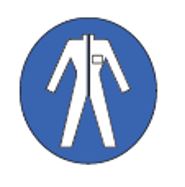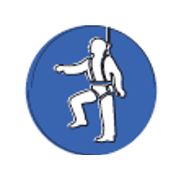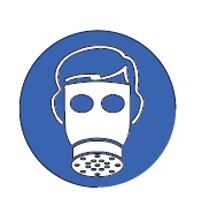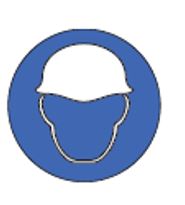Title Page
-
Tasks evaluated on
-
Tasks evaluated by
-
Location
PPE Hazard Assessments
- Task Analyzed
-
Task/Decription
-
Job Title
-
Work Location
-
Photo Of Task
HAND HAZARDS
-
Hand injury can be caused by: work with chemicals or acids, exposure to cut or abrasion hazards (for example, during demolition, renovation, woodworking, or food service preparation), work with very hot or cold objects or materials, and exposure to sharps.
-
Select Hazard(s)
- Chemicals
- Heat / Cold
- Cut / Puncture / Abrasion
- Electric Shock
- Other
- None
-
If Other, explain:
-
If None, explain:
-
Hazard Description
-
Required PPE
BODY HAZARDS
-
BODY HAZARDS
Injury of the body (torso, arms, or legs) can occur during: exposure to chemicals, acids, or other hazardous materials; abrasive blasting; welding, cutting, or brazing; chipping, sanding, or grinding; use of chainsaws or similar equipment; and work around electrical arcs. -
Select Hazard(s)
- Chemicals
- Heat / Cold
- Cut / Puncture / Abrasion
- Electric Shock
- Other
- None
-
If Other, explain:
-
If None, explain:
-
Hazard Description
-
Required PPE
FALL HAZARDS
-
Personnel may be exposed to fall hazards when performing work on a surface with an unprotected side or edge (6 feet or more above a lower level for Construction Industry, 4 feet for General Industry). Fall protection may also be required when using Mobile Elevated Work Platforms (Aerial Lifts, Scissor Lifts, Boom Lifts), tree trimming, performing work on roofs, or fixed ladders, etc.
-
Select Hazard(s)
- Unprotected Side / Edge
- Floor Hole / Opening
- Ladder Use
- Mobile Elevated Work Platforms
- Other
- None
-
If Other, explain:
-
If None, explain:
-
Hazard Description
-
Required PPE
NOISE HAZARDS
-
Personnel may be exposed to noise hazards when working in mechanical rooms; machining; grinding; sanding; cage washing; dish washing; working around pneumatic equipment, grounds equipment, generators, chillers, motors, saws, jackhammers, or similar equipment.
-
Select Hazard(s)
- Hand / Power Tool Use
- Powder Actuated Tool Use
- Pneumatic Equipment Use
- Working in loud area/room (Mechanical, Boiler, Machining, etc.)
- Other
- None
-
If Other, explain:
-
If None, explain:
-
Hazard Description
-
Required PPE
RESPIRATORY HAZARDS
-
Personnel may be exposed to respiratory hazards that require the use of respirators: during emergency response, when using certain chemicals outside of a chemical fume hood; when working with hazardous powders; when entering fume hood plenums, when working with animals; when applying paints or chemicals in confined spaces; when welding, cutting, or brazing on certain metals; and when disturbing asbestos, lead, silica, or other particulate hazards.
-
Select Hazard(s)
- Dust / Fume / Particulate
- Chemical / Solvent
- Other
- None
-
If Other, explain:
-
If None, explain:
-
Hazard Description
-
Required PPE
EYE HAZARDS
-
Tasks that can cause eye injury include: working with chemicals or acids; UV lights; chipping, sanding, or grinding; welding; furnace operations; and metal and wood working..
-
Select Hazard(s)
- Chemicals
- Heat / Cold
- Dust / Flying Debris
- UV / IR Radiation
- Falling / Dropped Objects
- Other
- None
-
If Other, explain:
-
If None, explain:
-
Hazard Description
-
Required PPE
-
Hazard Description
-
Required PPE
HEAD / NECK / FACE HAZARDS
-
Tasks that can cause head/neck/face injury include: working below other workers who are using tools or materials that could fall, working on energized electrical equipment or utilities, and working in trenches or confined spaces.
-
Select Hazard(s)
- Chemicals
- Heat / Cold
- Dust / Flying Debris
- UV / IR Radiation
- Falling / Dropped Objects
- Other
- None
-
If Other, explain:
-
If None, explain:
-
Hazard Description
-
Required PPE
FOOT HAZARDS
-
Tasks that can cause foot injury include: exposure to chemicals or acids, welding or cutting, materials handling, renovation or construction, and electrical work.
-
Select Hazard(s)
- Chemicals
- Heat / Cold
- Impact / Compression
- Puncture
- Slippery / Wet Surfaces
- Other
- None
-
If Other, explain:
-
If None, explain:
-
Hazard Description
-
Required PPE
-
Required PPE
-
Hazard Description





















